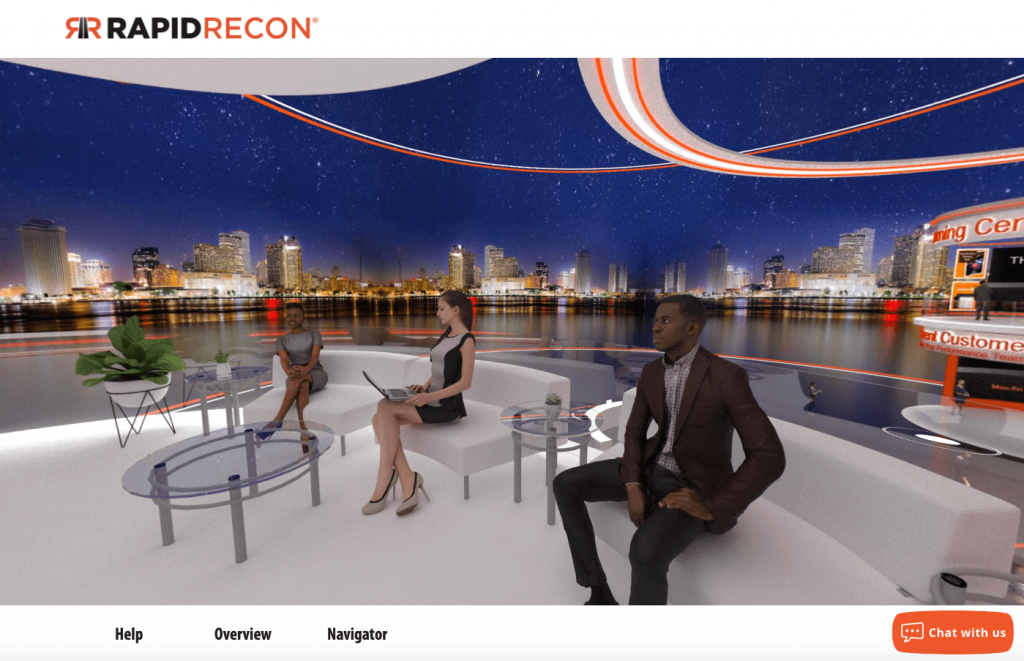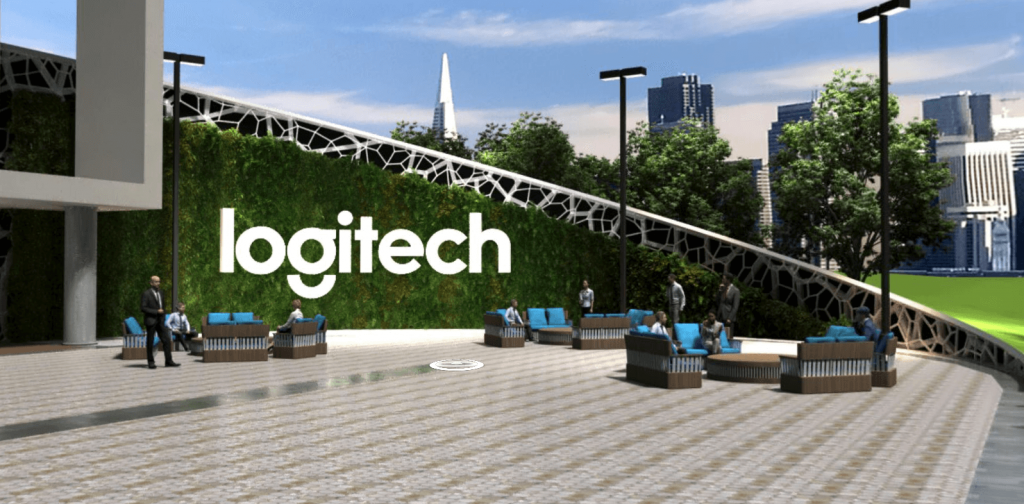A well-planned roundtable discussion is an effective way to both entertain and educate an audience. While this format can spur plenty of lively discussion, without careful planning, a roundtable has the potential to go off the rails. Fortunately, it takes only a few simple steps to plan for a virtual roundtable that audiences will consider a highlight of their event experience.
What Is a Roundtable?
A roundtable is a meeting or conference session that includes several participants, plus a moderator. The moderator’s job is to keep the discussion on-topic and ensure every panel member gets a fair share of the speaking time. The objective of a roundtable is typically to share knowledge and generate ideas via a collaborative discussion.
Roundtables are most successful with a topic of discussion that’s been defined in advance. This allows each participant to prepare some remarks but also provides plenty of scope for conversation and debate.
For events, roundtables can be organized in two ways:
- Hold a roundtable as part of a breakout exercise, and split attendees into groups. This approach allows everyone to participate. For a virtual event, this can be achieved by creating multiple chatroom channels, so each group has a private space for conversation.
- Organize a roundtable as an event for an audience to observe, rather than participate in. For this option, choose a number of guest participants to take part in a roundtable discussion in front of an audience. This can include audience participation by allowing for question time at some point during the session. Alternatively, email attendees the agenda, and ask them to submit questions via email. Provide the most popular questions to the moderator, who presents them during the discussion.

6 Steps to Roundtable Success
1. Define the Goal
The first step in developing a successful virtual roundtable is to define your goals. What do you want attendees to get out of this discussion? Do you want them to feel inspired or educated, or do you want them to take a specific sales action? This goal is part of what defines your discussion topic, so it’s important to have a clear goal in mind.
The goal for a roundtable differs depending on what kind of event it’s part of. For a conference, splitting up the audience into roundtable groups is generally about sharing knowledge and ideas. Here, the goal may be finding new ways to solve a specific problem. At an industry event, a roundtable for audience observation may have the dual goal of attracting new customers and sharing knowledge. In this case, knowledge-sharing is the means of customer attraction.
2. Pick a Discussion Topic
The discussion topic you choose for your virtual roundtable should be designed to help achieve your goals, both for the roundtable and for the event. To pick a suitable topic, think about the following ideas:
- What industry challenges are relevant to the theme of your event?
- How do these challenges intersect with your brand?
- If the roundtable has a sponsor, where does their brand and industry niche fit in? Ideally, your roundtable discussion topic is one that meshes with both the event brand and the sponsor’s brand.
- What do you plan to do with the information generated once the event is over? If your topic choice has good long-term industry relevance, the roundtable and related content could be a post-event marketing tool, for instance.
Most of all, consider your audience. Who’s going to be watching this roundtable, and what kind of discussion will they find valuable? What topic will make them consider this event a must-see?
3. Plan the Event Space
For a virtual roundtable, the process of finding an event space is simplified, as the online environment can easily expand in size to fit the needs of whatever you’re planning.
If you want a high-quality, seamless experience for participants and viewers, plus more customization options, a virtual event platform is the way to go. XtendLive’s 3D virtual studio can make a virtual roundtable discussion come alive—and you don’t even need to have all the participants in the same room for it to work. Our virtual studio films and inserts participants into a 3D virtual environment, all in real time, to create more engaging visuals that help keep audiences focused for longer.
Whichever virtual roundtable platform you choose, one thing that’s vital to your success is to give your participants plenty of opportunity to prepare themselves and their tech setup. Make sure to have at least one rehearsal before the event, so you can troubleshoot any tech problems in advance.
4. Choose and Invite Participants
Choosing Discussion Participants
This step applies in situations where your roundtable is part of a larger event, such as a trade show or sales conference that features different kinds of sessions as part of the content. Here, you’re choosing participants who may be noted experts in the field to participate in front of an audience. For situations where the roundtable will be a breakout exercise, or where it’s an in-house corporate session, this won’t apply, as your attendees will also be the participants.
Who should your participants be? The answer to this depends on your event, the goals of the roundtable, and other unique factors. In some cases, you may be aiming for notable people in the industry, such as thought leaders, experts, or CEOs. Look for people who have something to say about your roundtable topic, but make sure they’re people who can handle the dynamics of a roundtable discussion. Your participants should be reasonable, level-headed, and able to discuss a topic without fighting over it. It’s great if your participants are passionate about the topic, but not if it means they’re unable to handle disagreement.
Choosing a Moderator
Your choice of moderator has a strong impact on how successful your roundtable will be. For a roundtable format, the moderator’s role is to facilitate the discussion, but without guiding its direction. The event agenda sets the topic; it’s the moderator’s job to see that the discussion sticks to the topic, that it doesn’t stagnate, and that no single participant dominates the conversation.
To find a good moderator, try these steps:
- If you have a network of event-planning professionals, ask around for recommendations.
- Check out similar events to find moderators who seem like a good fit and have experience.
To find a moderator who will do well in an online setting:
- Ask about their experience hosting or moderating other virtual or hybrid events.
- Have a face-to-face meeting online to assess how well they present in a virtual setting.
- Ask about their technology set up to make sure they have the microphone, headphones, and other equipment they’ll need to present well.
5. Set the Agenda
The agenda for a roundtable defines how you want the discussion to proceed. It’s not necessarily a roadmap of every little detail but provides a rough guide that helps participants understand what’s involved.
Your roundtable agenda should include the following points:
- Introduction. A quick intro of two or three minutes to welcome the audience. Repeat the title of the roundtable, call out sponsors or partners, and introduce participants and the moderator.
- Topic. The topic that’s up for discussion during the roundtable, with a brief explanation of its relevance to the audience.
- Purpose. The goal of the discussion. For instance, this may be to share information or solve a problem.
- Major discussion points and questions. Any specific subtopics that will be addressed or questions that will be discussed. Being specific ensures the discussion is focused on the purpose and goal of the roundtable.
- Timeline. Start and finish time and break schedule, if the roundtable is long enough to need a break.
- Roundtable ground rules. It’s helpful to establish some simple rules of conduct, both to help facilitate good conversation and to ensure all participants get a fair share of speaking time.

6. Record the Discussion for Future Use
This may be a given for a virtual roundtable, but it’s worth reinforcing how valuable this content can be not just for the audience watching it live but for later audiences after the event is over. Some ways to extend the life of a virtual roundtable discussion include:
- Making it available on-demand on your event website and emailing a link to participants and audience members
- Transcribing the discussion and writing a summary of the most important answers and ideas for a blog post or email
- Creating a highlight reel of the most interesting ideas or a gag reel of any funny moments or bloopers
- Creating an infographic or writing a blog post that defines the roundtable goals and explains how they were achieved
This kind of content can have a number of potential uses. For instance, sharing recorded content can be an effective way of keeping an audience engaged after the event is over. Event-related content can also be used as part of a marketing campaign for an annual event. And highlighting the success of a roundtable can help show the value of your event to attendees, as well as potential event sponsors.
Avoid These Common Roundtable Mistakes
Fail to set an agenda. It may be difficult to see the value in setting an agenda for an unscripted conversation—after all, isn’t the idea to get creative and generate ideas? It’s a common mistake, and it can lead to disaster. Without an agenda, it’s all too easy for participants, including the moderator, to lose control of the conversation. They may get stuck on irrelevant topics, run overtime, and ultimately end up failing to achieve whatever goals you had for the discussion. The audience may feel disappointed or lose interest and log off before it’s over.
Choose an inexperienced moderator. The success of a roundtable depends just as much on choosing the right moderator as it does on choosing the right participants—perhaps even more so. Having a strong moderator is key, so don’t make the mistake of choosing someone who doesn’t have the necessary experience. They need to:
- Be comfortable with managing people who might be forceful, outspoken, or difficult to handle
- Be able to manage a conversation and ensure it reaches a successful conclusion within an allotted time
- Be comfortable holding and leading a conversation virtually
Invite too many participants (or not enough). The size of the table is very important when it comes to roundtable discussions. You need to invite enough participants that they can generate a lively, useful discussion, but if you invite too many, people may end up fighting to get a share of the speaking time. Even an experienced moderator can have difficulty staying in control if there are too many people at the table. This isn’t a situation where “the more the merrier” applies. A good number is generally between 6 and 10 people. This provides plenty of scope for varied conversation, without having so many people that nobody has the chance to say anything meaningful.
This is especially important for a digital roundtable, as too many voices speaking over one another in an online setting can be especially frustrating for the audience and everyone involved.
Forget to schedule break time. While a live roundtable might last for an hour or 90 minutes without a break, for virtual events, it’s more important to schedule in a short recess. People’s attention spans are shorter at online events, and scheduling a break every 30 to 45 minutes can help keep engagement levels high.
Plan and Prepare for Virtual Roundtable Success
As with most things event-related, the key to hosting a successful roundtable is in the preparation. Be thorough in your planning, and choose your participants and moderator with care. Get these details right, and the rest will fall into place for a roundtable discussion that entertains, educates, and gets results.









